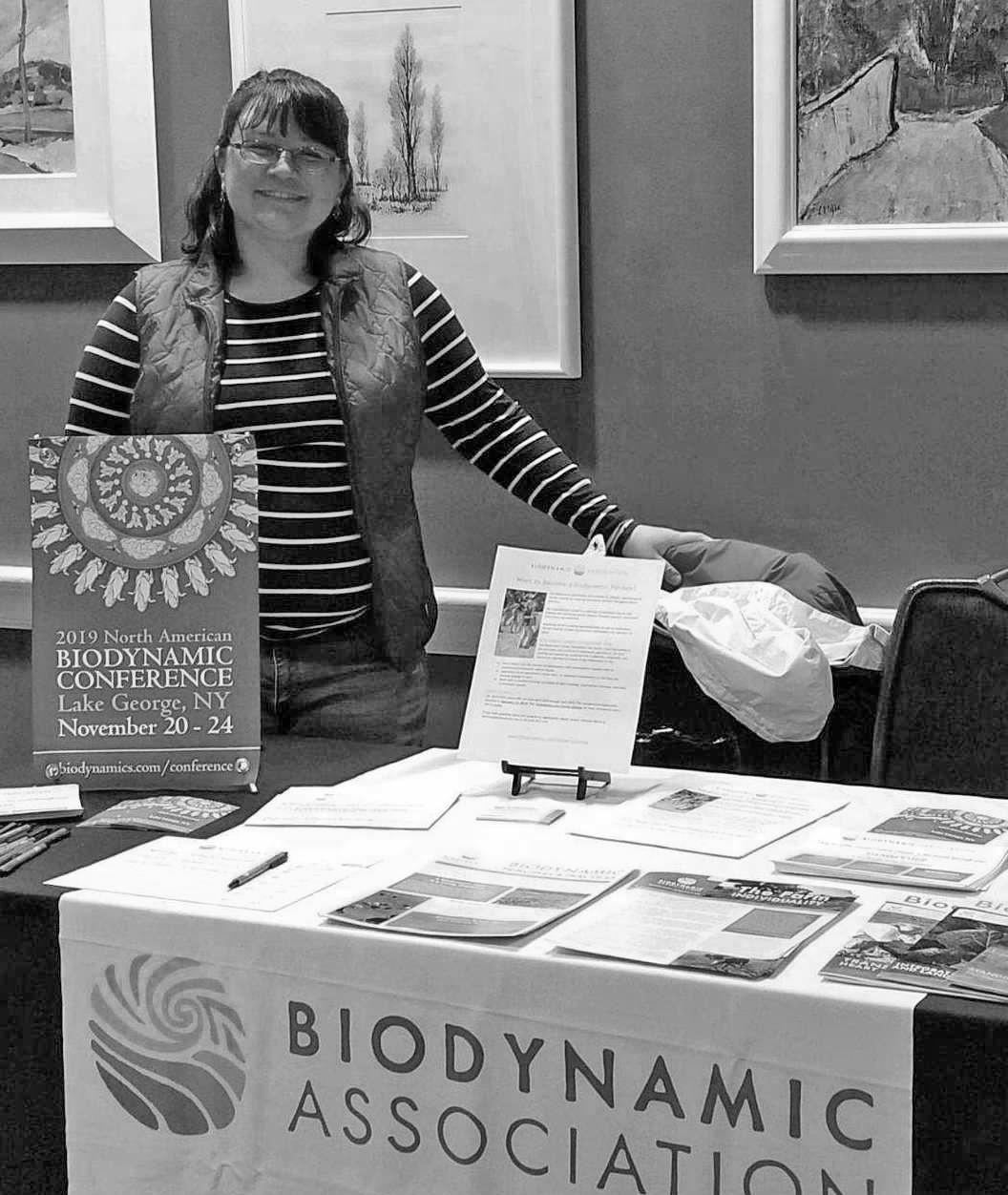
20 minute read
SHARING BIODYNAMICS ACROSS THE US
SHARING BIODYNAMICS ACROSS THE U.S.
FUTURE HARVEST CASA CONFERENCE — COLLEGE PARK, MD (JAN. 17-19, 2019)
There seems to be a lot of diversity in the Chesapeake region, which was pretty evident in my conversations with folks of varying ages, races, backgrounds, agricultural expertise, and home landscapes at the Future Harvest CASA (Chesapeake Alliance for Sustainable Agriculture) Conference. This was my first time attending a sustainable agriculture conference in this area, so I know very little about the real picture of agriculture in that region; however, through my conversations I met a large number of brand new farmers across the age spectrum. Attendees came from the flat shores of the Atlantic, the hills and peaks of the Appalachian Mountains, and many places in between. A number of people came to our exhibit table following Stewart Lundy’s presentation on integrating animals into the farm, which led to conversations about the basics of biodynamics and, when that resonated, how to get started. Having just started gardening with biodynamic principles last summer, I felt like I had some helpful tips and resources to offer these beginners in starting their non-stressful, lowpressure journeys with biodynamics.
— Anna McAvoy-Emrick
NOFA NEW YORK WINTER CONFERENCE — SARATOGA SPRINGS, NY (JAN. 19-20, 2019)
On a snowy weekend in Saratoga Springs, I was part of the number in attendance at the annual NOFA New York Winter Conference. After a year of living in the Hudson Valley, this was my first trip to this conference, and it was a pleasure to be an active part of this community gathering. At my station behind the Biodynamic Association’s booth in the vendor hall, I shared and learned about themes of sustainability, community renewal, health, and spirit held in the activity of farming. As I found an unclaimed spot on the floor for Hugh Williams’ talk on “Biodynamic Fruit,” the darkened room was full of people, curiosity, and mirth that spilled out the doors and into the hall. This warmth flowed further—walking through the halls, sitting in on talks, and sharing meals, I was greeted by familiar faces and made welcome by new ones. Questions, stories, and connections wove together into a rich experience of place that is the Northeast farming community.
— Raphael Guzman
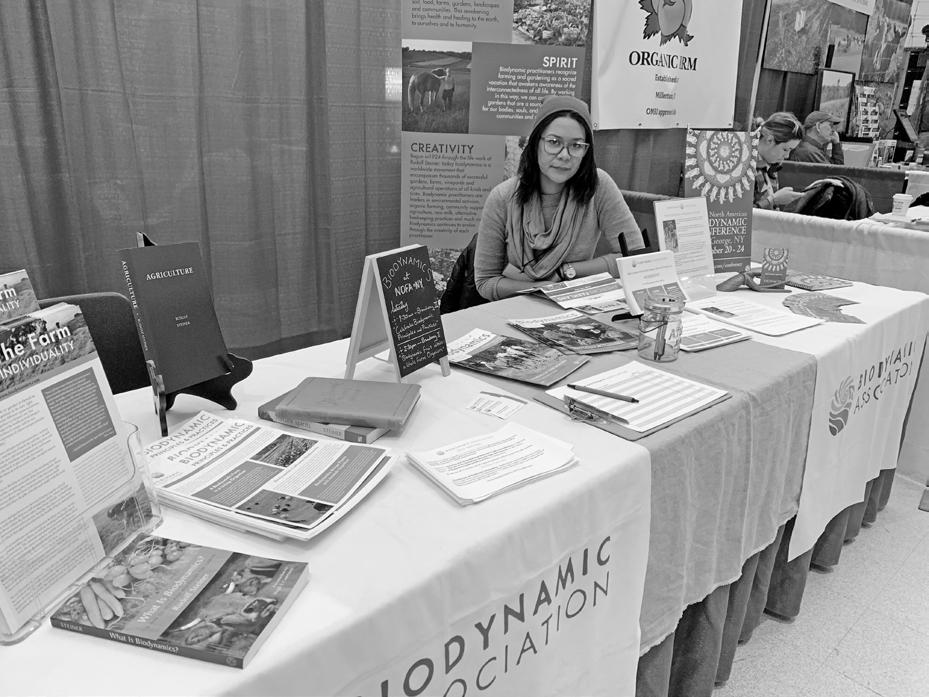
ECOFARM CONFERENCE — PACIFIC GROVE, CA (JAN. 23-26, 2019)
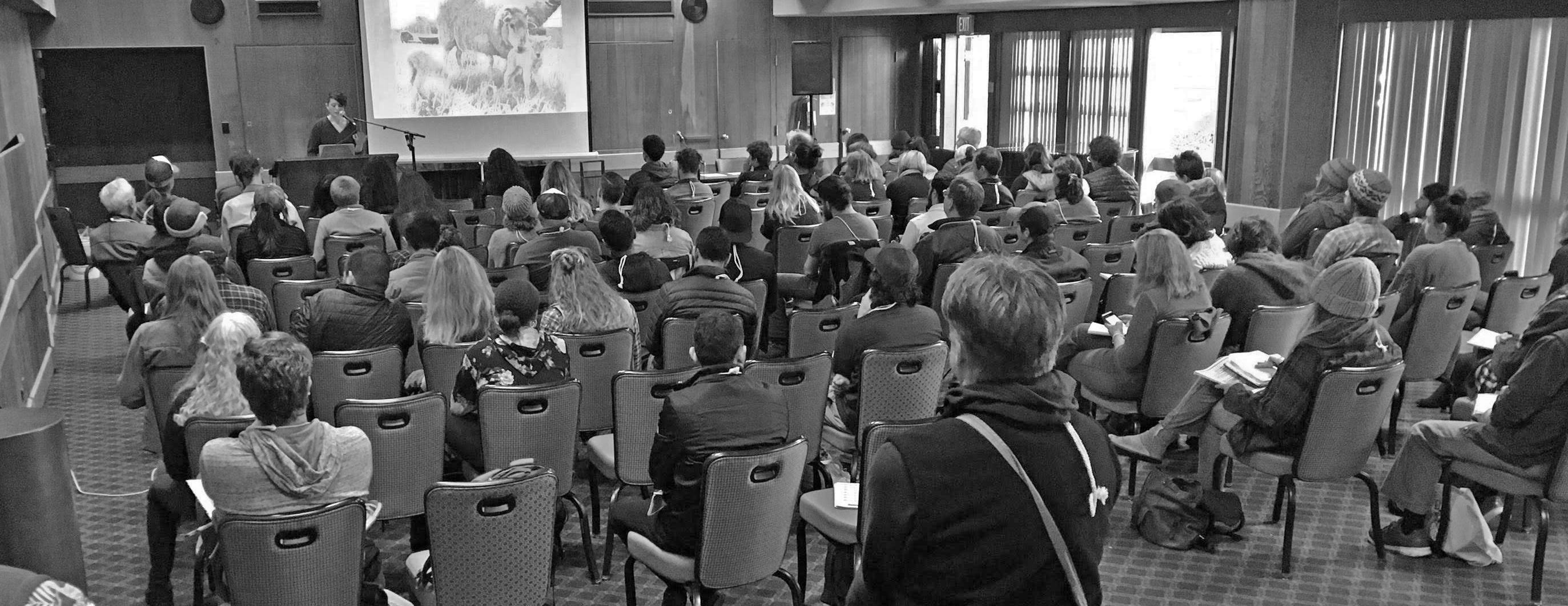
Biodynamics was strongly featured throughout the 2019 EcoFarm Conference, which has been held annually since 1980 and draws around 2,000 participants. A pre-conference bus tour brings three busloads of people to several regional farms, and this year Carin Fortin and Delmar McComb’s Blossoms Biodynamic Farm was featured, and many participants said it was their favorite farm of the tour. During the main conference, I offered an “Introduction to Biodynamic Agriculture” workshop, which drew about 80 participants, many of whom asked great questions during the interactive period after my presentation. And perhaps most significantly, biodynamic farmers Lisa Bjorn and Marney Blair of Fulcrum Farm were honored as one of three farms featured in the “Successful Organic Farmers” keynote. They also offered an inspiring and engaging workshop, “Biodynamic Animal Husbandry,” where they effectively wove together the spiritual and practical aspects of working with animals to a standing-room-only audience.
— Thea Maria Carlson
NORTHERN PLAINS FOOD AND FARMING CONFERENCE — FARGO, ND (JAN. 24-26, 2019)
This was the first year the BDA was in attendance at the Northern Plains Food and Farming Conference, and we were especially excited to take part given that biodynamics had such a strong presence: Steffen and Rachel Schneider of Hawthorne Valley Farm and Dr. Appachanda Thimmaiah both led pre- and main conference workshops, in addition to Steffen being one of the keynote speakers. I was thrilled with the level of interest in Rachel and Steffen’s workshops, which I attended, and equally impressed by their ability to make the information so accessible. In addition to interesting conversations and many great questions at our booth, I was also able to take part in a few workshops. One huge takeaway for me was the importance of local grains, crops like oats and wheat, not just as beneficial cover crops, but as local products that I should be supporting! I’m grateful for this new-found awareness and hope that I have the opportunity to visit Fargo again, but maybe in the summer, without the presence of the Polar Vortex!
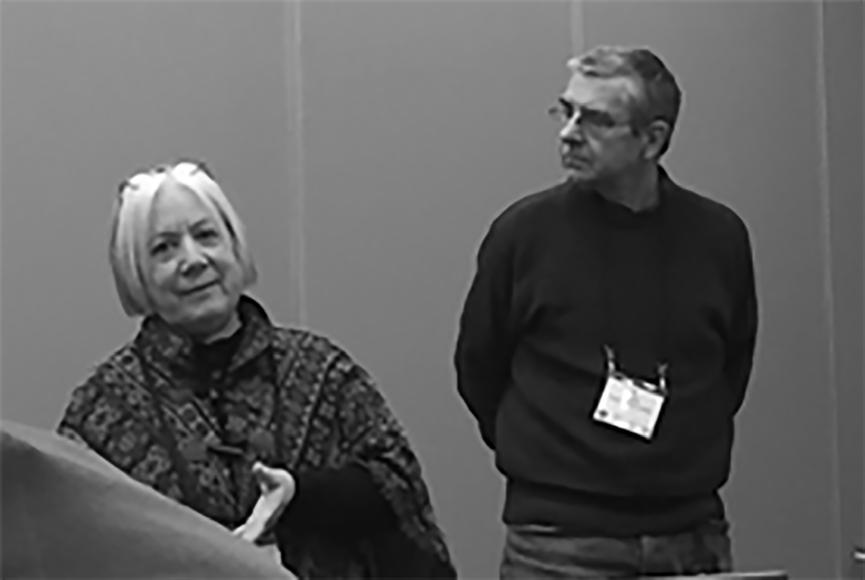
— Kaitlin Downs
SPIRIT OF THE EARTH FARM — UHANE AINA: MOVING INTO THE FUTURE
MARIE MAUGER
“Everything that the ego is able to unfold within itself is to become love.” —Rudolf Steiner
“The real doctors are farmers.” It’s amazing how the words of a treasured teacher can change the entire direction of one’s life. Dr. Bernard Jensen was underlining the intricate connection between soil health and human health. Hearing those words, I had an intuitive vision of owning a biodynamic farm on Kauai— the peak chapter of a long, rewarding career in natural healing and nutrition. Today Spirit of the Earth Farm is in its twentieth year of producing a rich variety of bountiful biodynamic produce for farmers’ markets, natural food stores, restaurants, and CSA members. The 16.5 acre farm is located in Moloa’a, a region known for its deep soils and moderate rainfall despite the fact that one of the wettest ter earth. The only missing element was a stream running through the land, compensated for by the soothing sound of crashing waves on nearby cliffs and natural springs within walking distance. Never mind that our lips were burning from the toxic Malathion the neighbor was spraying while we were taking in all of this majesty. During escrow, soil tests revealed quite high levels of DDT, a persistent nasty pesticide, traces of which are found in every sample of breast milk tested. A pervasive hardpan, not an earthworm in sight, and now pollution had me wondering why all farmers wouldn’t want to leave their soils better for those who are yet to come. “Sure am glad I know biodynamics,” I thought. In the early 1980s, my friend Ann West introduced
spots on earth is less than twenty-five miles away. The first time I saw the land, I had been driving around “lost” in a newcomer attempt to find a local beach access. Pausing for a moment before turning back, I noticed the destruction inflicted by developers who had “scraped and grubbed” over 600 acres for an agricultural project. The next day as the real estate agent guided me through the maze of farm lots, everything looked familiar. When he asked me to park at the exact spot I had turned around, I exclaimed, “I was just here!” Twice in two days got my attention. Whenever people ask how I found the farm, I can only say, “The farm found me.” It was love at first sight: a gentle slope, a glimpse of sparkling blue sea, the stunning presence of Kalalea Mountain, a place where Hawaiians believe new souls enme to the biodynamic method. Upon our first meeting at my home in Venice, California, we walked through a lush street side flower garden and into a back garden filled with dwarf fruit trees and mixed veggies. She gently urged, “You’ve got to learn biodynamics.” Under her suggestion, Hugh Courtney of the Josephine Porter Institute became my mentor and patiently schooled me in the biodynamic method for many years—mostly by phone. “What’s so special about biodynamics?” soon became an intriguing inquiry. I was at that time already a sincere spiritual seeker, California-certified nursery person, landscape designer, healing practitioner, and avid nature lover. Now biodynamics and the teachings of Rudolf Steiner thrust me into a world that to this day continues to reveal mysteries.
The answer to “Why biodynamics?” came in 1985 when I read Alex Podolinsky’s freshly published book, Bio-Dynamic Agriculture Volume 1. Two centerfold color pictures of soil profiles revealed what I had been longing to see. The first illustration showed a soil profile with no topsoil, little root growth, and deep compaction. The second showed the same soil transformed in one year to seven to ten inches of topsoil. How? This process takes nature 2,800 years or more! Alex had done a deep ripping every six to nine feet, sowed with pasture grass, and applied biodynamic preparation 500 in spring and autumn. That was it! Biodynamics for me!! I couldn’t imagine anything better than the ability to restore damaged soils in such a short time. Rudolf Steiner claimed that the entire Earth needed to be sprayed with the biodynamic preparations, so I put this task on my “to-do” list. I like to imagine this partially came to pass on our farm when we buried eight of the biodynamic preparations around the base of our “lead” Kukui tree and hung quartz crystal dust in her branches. Henceforth, the oak-like form of the tree became a powerful radionics transmitter, showering silver light from her crown into the cosmos. a year, sixteen samples of beets and green beans, and lots of soil tests for toxicity and nutrient content to get the final results. Diana crunched the numbers and sent me an email, “I can hear you crowing from here!” Yes, the four biodynamic test plots showed a significant reduction of DDT in both the soil and produce samples compared with the other three treatments. It was a small yet significant research victory that offered a documented solution for remediation of contaminated soils using the biodynamic method. (For details see Biodynamics, Winter 2007, No. 259, “Safe Food From Contaminated Soil? Biodynamic Agricultural Method Shows Successful Field Research.”) To start a farm on one of the most remote places on Earth, especially as a single, aging, disabled woman without family support, took a peculiar blend of courage, ignorance, idealism, and determination. No real tools, no help, no knowledge of tropical agriculture, and no close friends were at hand. Where does one start? Seek out other biodynamic farmers! I was lucky enough to find two kindred spirits. Deb was a gifted Waldorf teacher and Bob an all-around can-do type of guy. Happily for me, Bob, Deb, and I hit it off from the start. They were well grounded on the island,
lived only two miles away, and also were just getting their farm started. Their openness and friendship were like finding family. Although I’ve long had a sense of being guided and protected, the journey has not always been a stroll through paradise. A tough hurdle has been compromising values to satisfy market demands—that is, making way too many decisions based on money rather than an inner
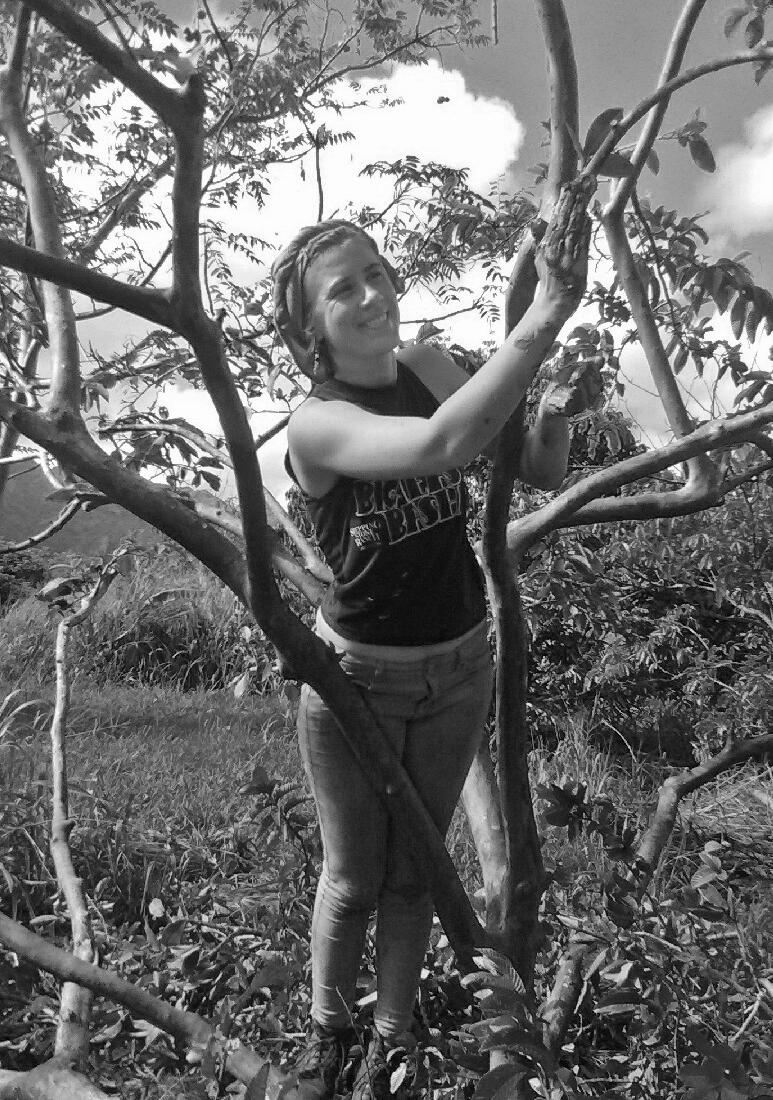
After stewarding Spirit of the Earth Farm for seven years, I received a modest grant from the SARE branch of the USDA for a field research project to clean up DDT contamination in our soils and vegetables. Diana Tracy of Antech Labs in Oregon supported this project with a substantial discount for lab work. She even spent a weekend rewriting the grant proposal so it would be accepted in the scientific community. It took
knowing of the heart. Another big “ouch!” was going into debt to build a community seed-saving barn, yet needing to tear it down after running out of funds midway through. I’m still feeling the sting of that one. The lesson learned is to have plenty of cash beforehand for your projects. Overall, the social aspect has been the most challenging part of farming. Much as I wanted to share my passion for growing food with a stable core of long-
term, spirit-guided farmers and apprentices, the reality up until recently has been dramatically different. Kauai in general is a holiday dream spot or perhaps a stop off to another destination. With few exceptions, most of those who helped create the farm of today were short-term work-traders and WWOOFers. Relative to the prospect of camping on a public beach, the farm was often viewed more as a safe, protected haven than a budding career choice. The challenge of being a good gatekeeper at first brought many unexpected crises to the farm—alcoholism, drug use, mental instability, wild parties in the “family bus” at night, and endless drama. Some residents even coached newcomers on the sure way to be accepted: “Just tell her you’re interested in biodynamics.” An application and the checking of references are now standard procedure. From the start, the travelers were asked to do one thing in particular: “Please! Put love into everything you see and touch, in your own way, to the best of your ability.” Even so, the turnover rate took its toll on me. Teach ‘em and watch ‘em leave. While I put in 60-80 hours a week, only 10-15 hours were asked of others. After an attitude adjustment, I began to appreciate even the smallest contribution regardless of how long someone might stay. Several years ago, under the guidance of Francis Cleland, we embarked on a study of Steiner’s foundational books and selected lectures. Francis, who is an anthroposophist, former Waldorf teacher, and biodynamic-trained farmer, excels in teaching. We’ve covered Life between Death and Rebirth, Spiritual Beings in the Heavenly Bodies and in the Kingdoms of Nature, The
Agriculture Course: Birth of the Biodynamic Method, the nutrition lectures, and more. Today, a welcome harmony is evident among the ten co-workers currently on the farm. Could it be the result of an out-of-character move I made several months ago in announcing that everyone on the farm—apprentice, work-trader, farmer, visitor—was required to come to three weekly study groups? Our spiritual studies have come to life when, as a group, we consciously question how to integrate the teachings into daily farming practices and interactions. Beautiful things are now occurring spontaneously. A surprise recently came from a study group regarding the name of the farm. Years ago I read Countess Johanna Keyserlingk’s words that “when Christ’s blood flowed to earth from the Cross on Golgotha, a new Sun-globe was born in the interior of the earth. And it is there that the Christ… made His throne as Regent of the earth.”1 I thought, “That is REALLY great news!” It was amazing to recognize that Christ is the Spirit of the Earth. This awareness was not part of naming the farm. A cornerstone of biodynamic practice is the integration of animals into the farm in order to help make the farm a self-sustaining organism. We treasure their manures for maintaining soil fertility through
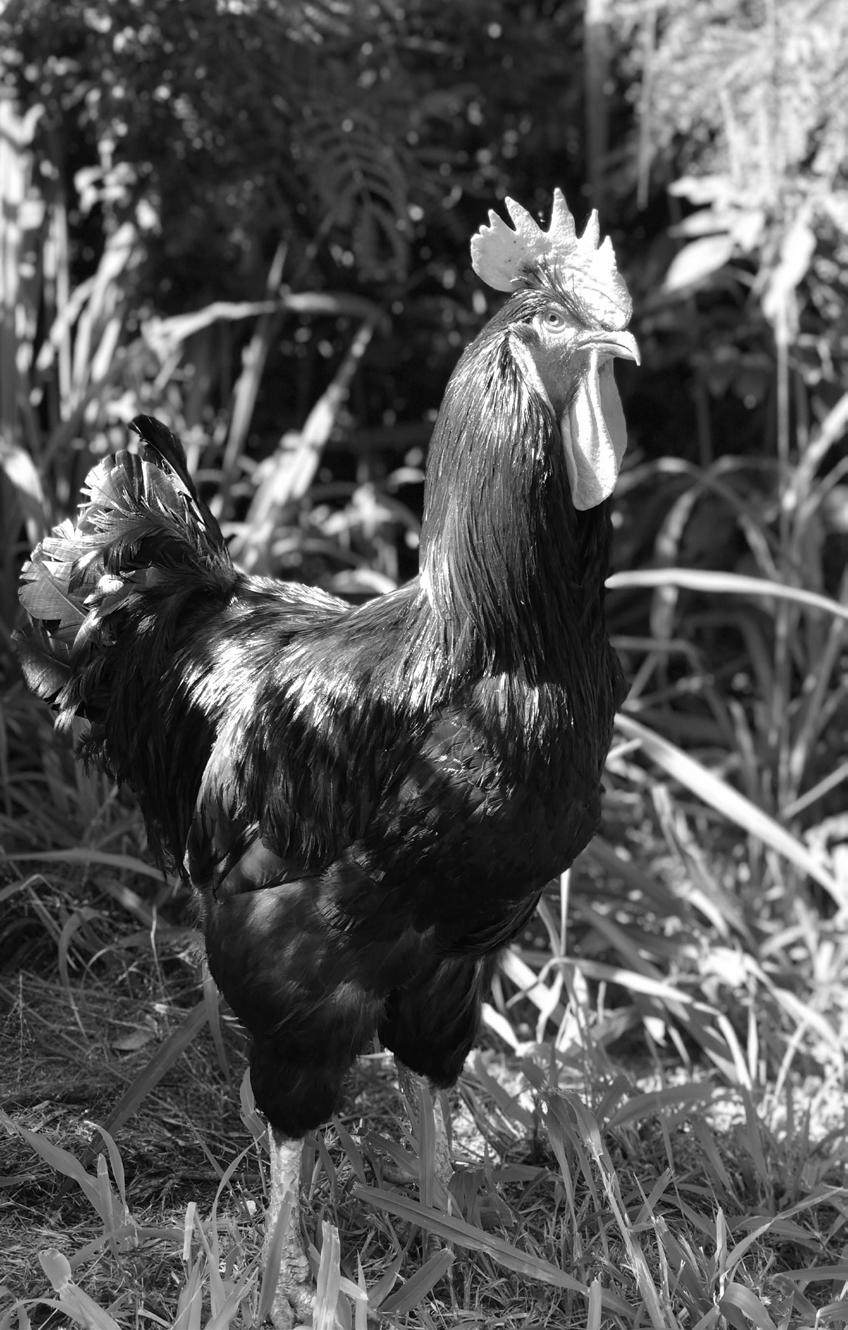
composting. As Countess Keyserlingk noted, “the actual secrets of manure belong to the most interesting, most extraordinary mysteries.”2 With animals has also come the need to deal with life and death situations almost daily. Just yesterday as I write this, a missing hen was waiting in the chicken coop for evening meal with ten tiny, freshly hatched peeps nestled safely under her outstretched wings. In contrast is the memory of opening the coop and finding a dozen hens gasping for their last breath due to botulism, a take-you-down-now disease. Through the years, I’ve managed to save a few chickens from the grip of botulism by acting swiftly. The hardest animal-related task of all was asking a neighbor to shoot “Honey Girl” when she broke her leg. It took several years to find her (on Big Island), a dairy cow with horns. She calved a bull and a heifer on the farm. The silver lining to the cloud of abruptly ending her life was that we could now befriend her six-month-old heifer, whom big mama had fiercely protected by always lowering her horns as a warning. Daily, baby “Honey Pearl” got special cow treats: bananas, guava, and papayas. We became good friends. Big Red, our huge Rhode Island Red rooster, became a TV star because of an abscess on his claw. Our local mobile vet had cleaned out the infection and stitched it up. The day the stitches came out, the National Geographic Wild film crew also serendipitously arrived to shoot an episode for a TV series, The Adventures of Dr. Buckeye Bottoms. Unfortunately, X-rays showed that the infection had eaten away the bone in two places, and amputation seemed imminent. Six weeks later, new X-rays showed the bone starting to grow back together. A diet change rich in organic seeds and grains, antibiotics, and Epsom salt foot baths all helped Big Red recover fully. He still has the deepest, mellowest crow in the neighborhood. As the years have passed, so have many activities that were once an intricate part of farm life. Weekly Sunday meetings over pancakes, seasonal celebrations, mid-day meals together, one-day introductory workshops in biodynamics, dinner parties with a set price and menu, sustainable-living film nights for the community, birthday celebrations with fire dancing, belly dancing, and even sword dancing are all fond memories. If I had the energy and physical strength, I would still be doing it all. But this has become the time of transition, of letting go, of letting others. Gratefully, the farm is coming along beautifully under the care of many other hands: several acres of diverse orchards, twelve abundant gardens scattered throughout the farm, a greenhouse brimming with starts, pastures with two heifers soon to be bred, several flocks of chickens, weekly rhythms of compost and prep-making, the spreading of preps (including The Three Kings Prep on Epiphany)—an invitation to the elemental beings to feel safe on the farm and to thank them for all they do. We have been richly blessed. Although the farm has few solid structures, there’s an intricate invisible infrastructure— extensive water system, septic system, solar and on-the-grid electric, phone line, foundations for a pod cluster house with five bedroom units, and the big barn. All are awaiting the next generation of upgrades to spring into visible life. In the meantime, living in soft structures, close to nature, has its rewards and ongoing challenges. My dream is for the farm to continue into perpetuity as a growing community of spiritguided, biodynamic farmers. Equity Trust is proving to be a valuable partner in helping to structure a container for that possibility. The missing elements are sufficient young biodynamic farmers who are committed to a longterm co-stewardship and who bring their fresh ideas for the future. We currently have one of the most wonderful farmers God ever created, Richard Kraft. At sixty-five years of age, he too is asking, “Where are the young farmers?” With more of my time freed up, I can create a website that morphs into a book. Why Biodynamics? Research, Observations and Inspiring Stories is for aspiring farmers, students, consumers, and produce buyers who prefer information delivered in a brief, tothe-point format. Honing scholarly abstracts into a delight
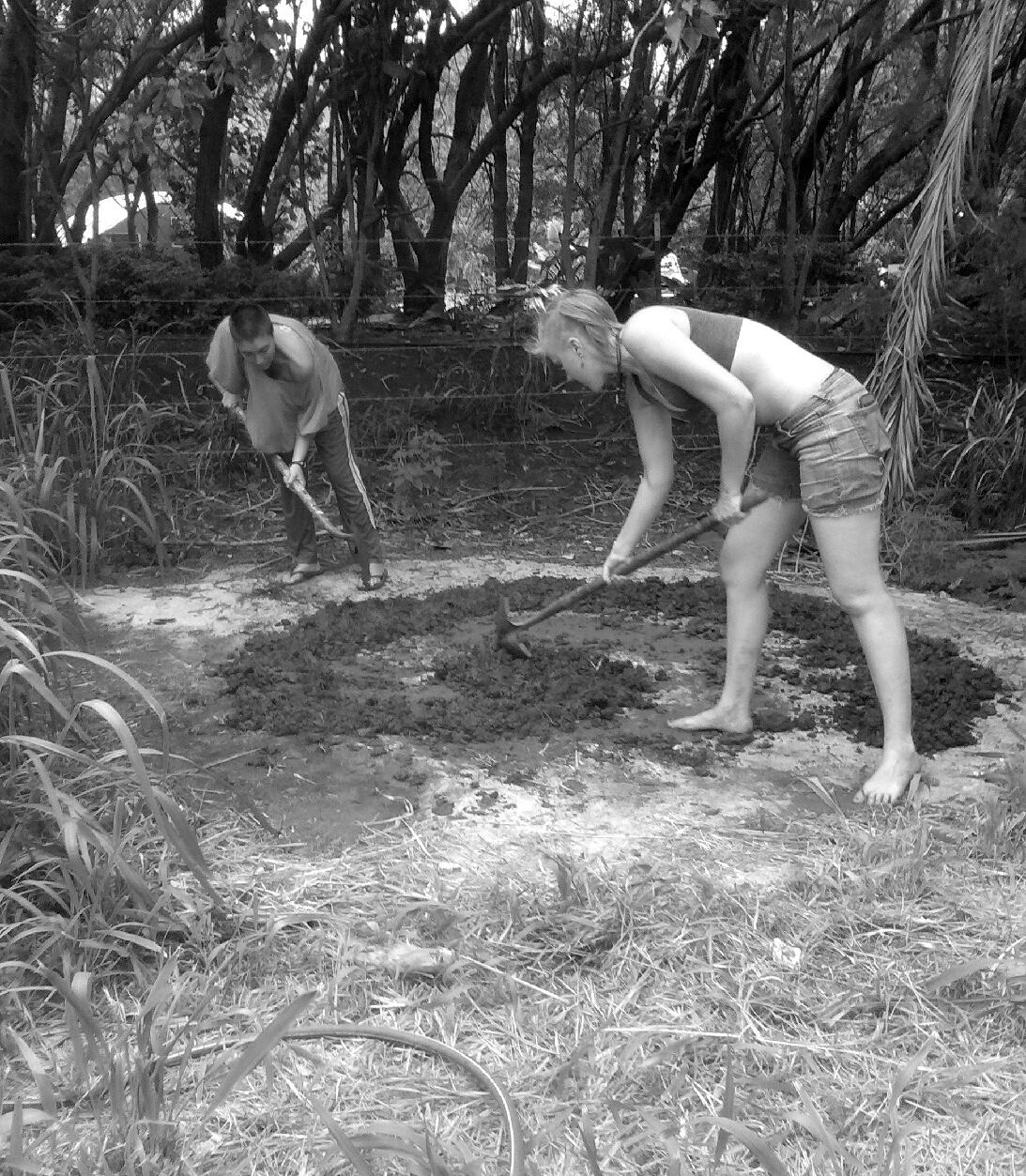
of quintessential information, sparse with words and abundant with visuals, is something I love to do. Woven into the book will be examples of Rudolf Steiner’s threefold task of worldwide significance, which arose out of the Agricultural Course. Countess Keyserlingk, hostess for the course, felt responsible to remind the world of this task twentyeight years after the event: spiritualizing the sciences, sanctifying the earth, and counteracting the worldwide danger threatening human nutrition. When asked why so many people had difficulty engaging their will for spiritual ideals, Steiner replied, “This is a problem of nutrition. Nutrition as it is today does not supply the strength necessary for manifesting the spirit in physical life. A bridge can no longer be built from thinking to will and action. Food plants no longer contain the forces needed for this.”3 Further research to clean up DDT and other toxins is still in my plans. Test plots will include prayer and intention, two popular amendments—biochar and effective micro-organisms (EM)—and, of course, biodynamics. Sensitive crystallization images will help to evaluate life-force energies. Grant monies are usually more forthcoming if farmers or government agencies collaborate, so I am actively seeking partners who also have contaminated soils for study. After two decades, my school bus home has four waterfall features during rainy periods, accompanied by copious mold. Everyone on the farm is cheering for me to move into an almost finished six-sided cabin. I plan to surround it with fragrance and beauty: flowers, herbs, veggies, fruit trees, lei-making plants, all of which will receive pure love every day.
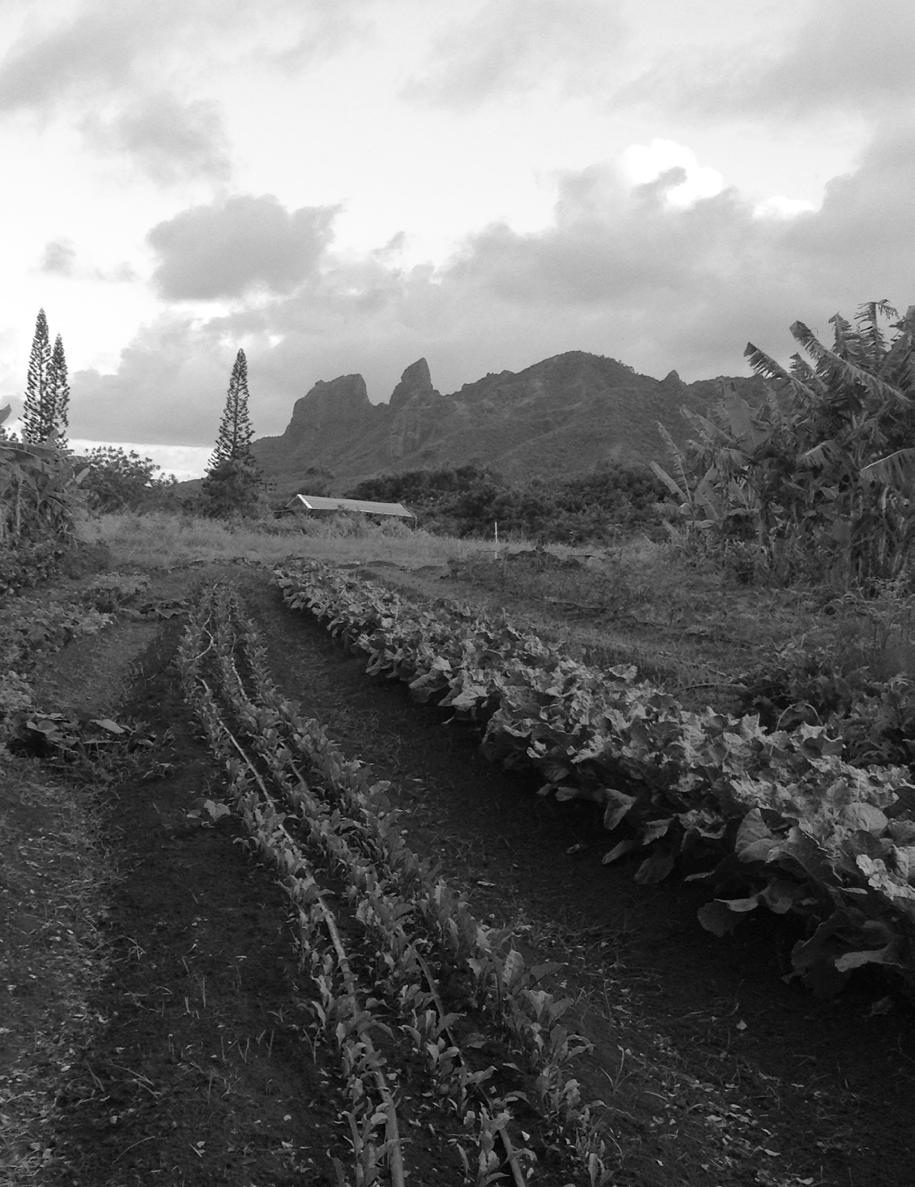
1. Johanna Keyserlingk, “Foreword to the English Edition of 1952,” in The Birth of a New Agriculture: Koberwitz 1924 and the Introduction of Biodynamics, Adalbert Graf von Keyserlingk, Ed., (London: Temple Lodge Press, 1999), p.17. 2. Ibid. p. 17. 3. As told to Ehrenfried Pfeiffer and recorded by him in the essay “New Directions in Agriculture,” Appendix C in Rudolf Steiner, Spiritual Foundations for the Renewal of Agriculture, (Kimberton, PA: Bio-Dynamic Farming and Gardening Association, 1993), p. 261.
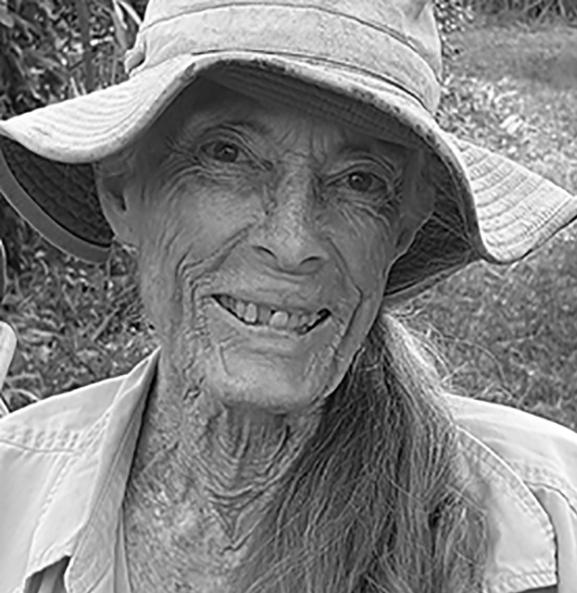
Marie Mauger has been a teacher, organic/biodynamic gardener, and farmer for 47 years, with an equally long career in natural healing, doing therapeutic massage, kinesiology health scans, iridology readings, nutritional counseling, and colon hydrotherapy. Her 16.5-acre farm, Spirit of the Earth Farm (Uhane Aina), is in its twentieth year of producing food for local farmers’ markets, CSA members, restaurants, and stores. Marie conducted a one-year field research project funded through USDA that showed greatest reduction in DDT levels contained in soil and produce as a result of biodynamic applications. She is passionate about agricultural research and is currently learning to make and interpret chromatogram and sensitive crystallization images. The farm offers three study groups a week in biodynamic and anthroposophical topics as well as an on-farm apprentice program for career farmers. Marie is also a lei maker and loves to sing.
Join us on Wednesday, June 12 at 7:30pm Eastern Daylight Saving Time (that’s 1:30pm Hawaii–Aleutian Standard Time) for our quarterly Member Conversation Salon with Marie Mauger. Check here for details: https://www.biodynamics.com/content/member-conversation-salons
Wish you could have been at the 2018 Biodynamic Conference: “Transforming the Heart of Agriculture: Soil. Justice. Regeneration.” or that you could have been in two sessions at the same time?

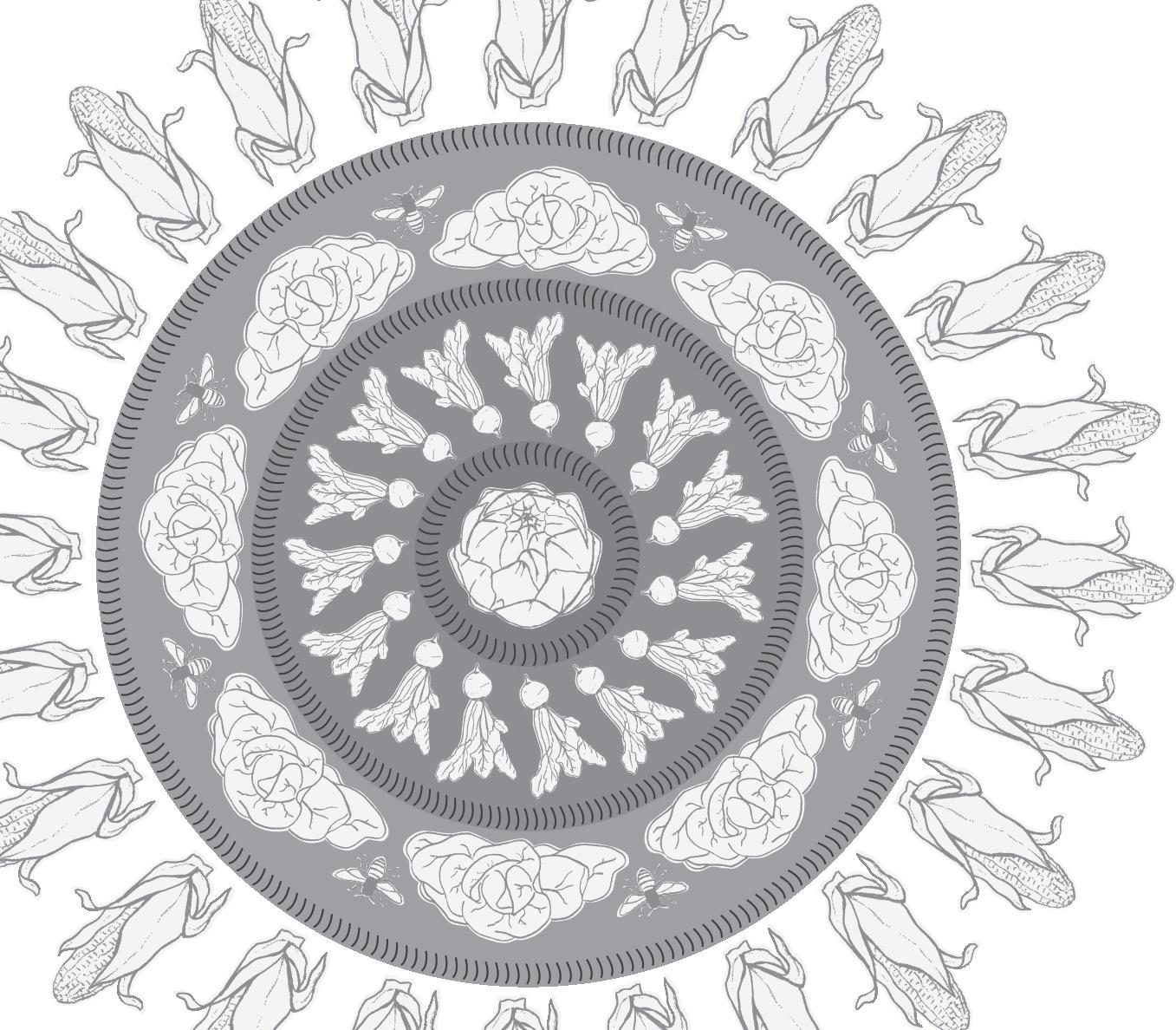
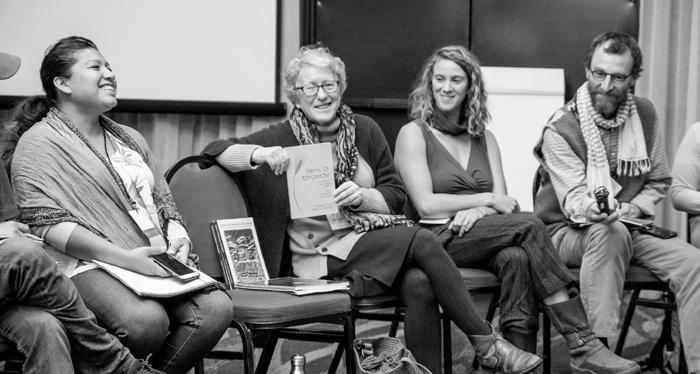
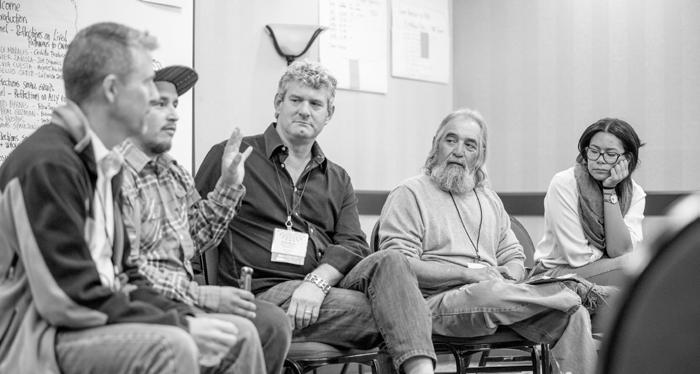
Explore and journey deeper with conference recordings. With three package options to choose from, BDA member discounts, and a downloadable format, it’s never been easier to take the spirit of the conference with you wherever you go. https://www.biodynamics.com/conference/2018/recordings
Thanks to a generous donation from Connoils and Stacy Peterson, all those who received a scholarship to participate in the 2018 Biodynamic Conference received complimentary access to the 2018 Conference Video/Audio Package.

Photos © Broken Banjo Photography
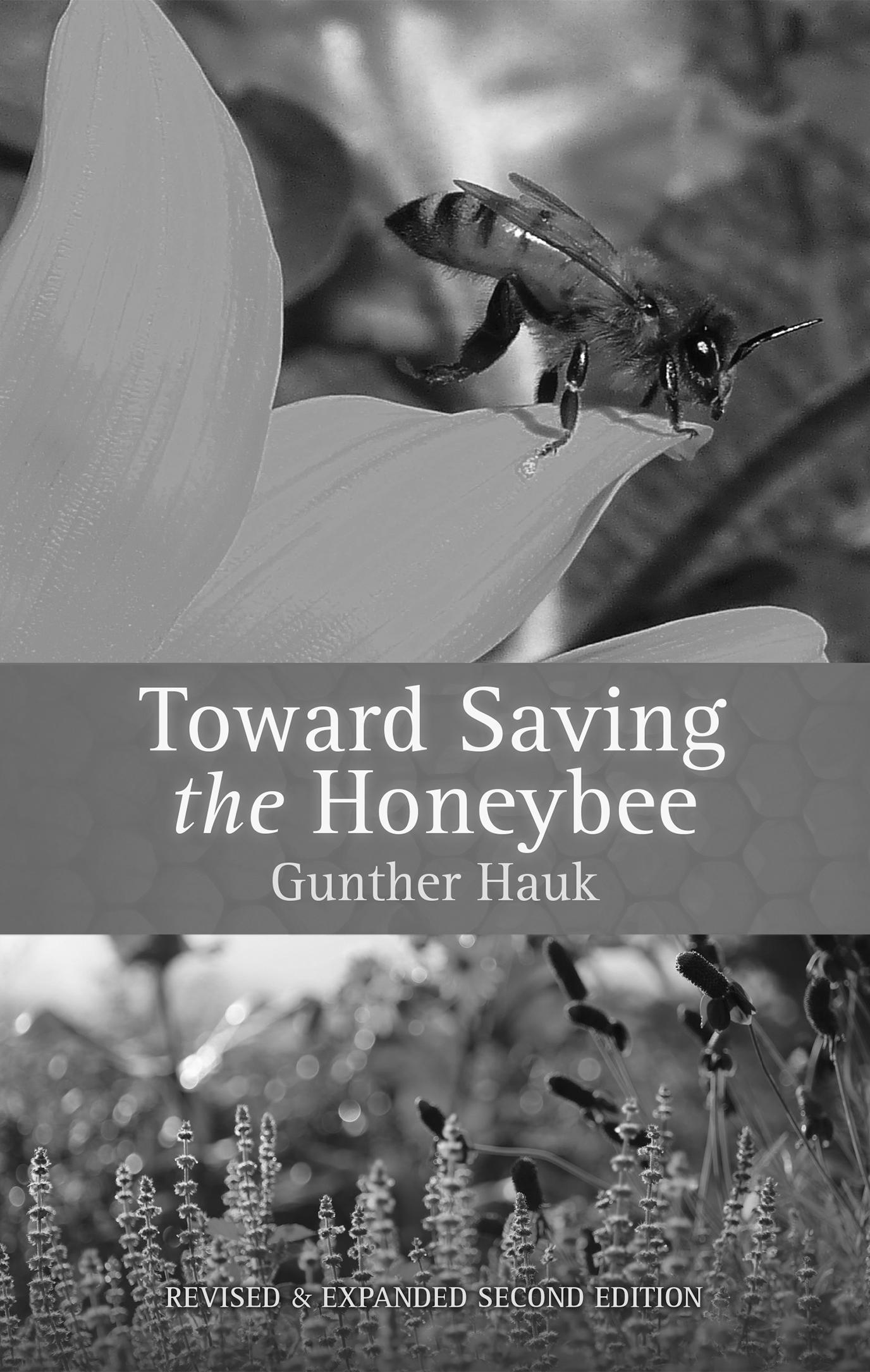
Toward Saving the Honeybee
Revised & Expanded 2nd Edition
First published in 2002, four years before the term “colony collapse disorder” was coined, Toward Saving the Honeybee provides a straightforward, holistic approach to the honeybee crisis that is even more necessary now than ever. Gunther Hauk provides a light that shows the way forward for farmers, gardeners, hobbyist beekeepers, and anyone concerned about the future of our planet.
This new edition is richly illustrated with color photography and has been revised and expanded with new content by the author.
Gunther Hauk has been a teacher, lecturer, biodynamic gardener, and beekeeper for more than 35 years. He co-founded the Pfeiffer Center in Chestnut Ridge, New York in 1996 and, together with his wife Vivian, Spikenard Farm, Inc., a non-profit honeybee sanctuary in 2006, now located in Floyd, Virginia.








